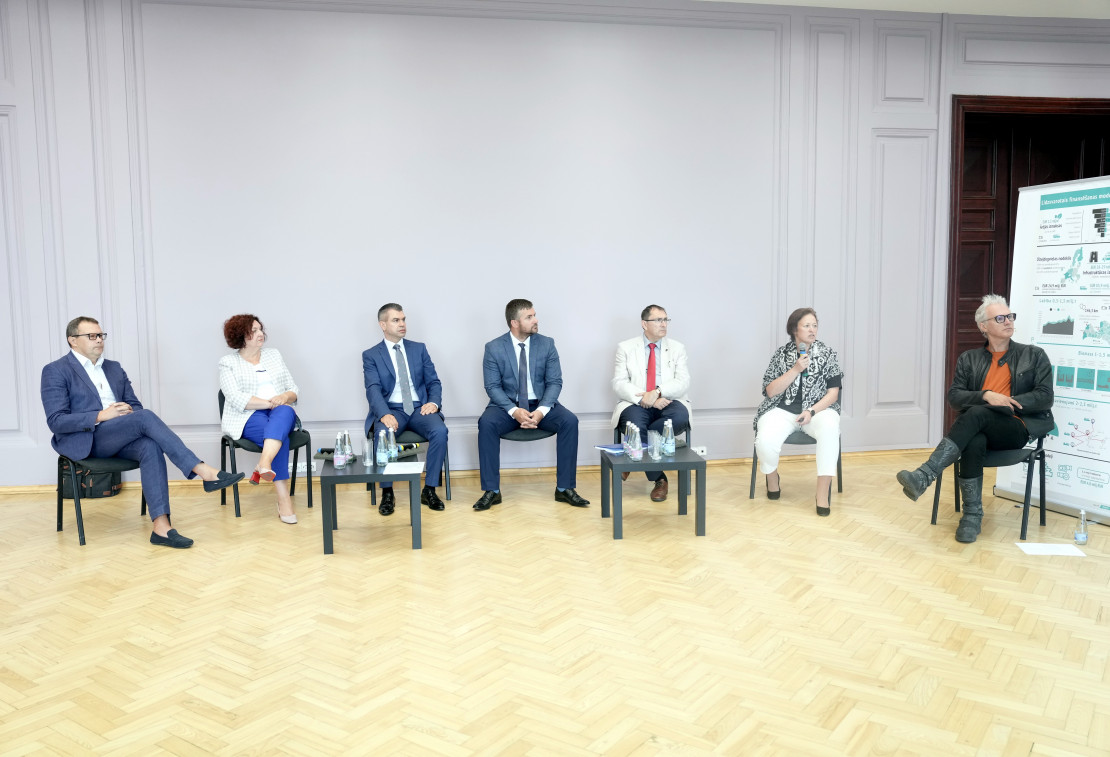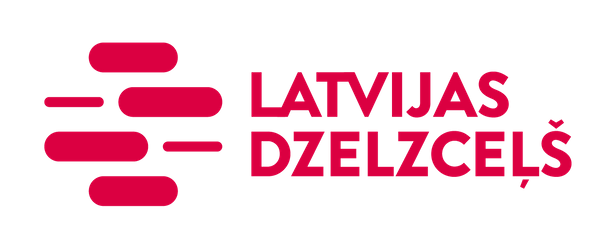
A discussion organized on August 17 by JSC "LatRailNet", a subsidiary of JSC "Latvijas dzelzceļš", brought together industry experts who were acquainted with LatRailNet report “Balanced financing model for domestic freight transportation” and discussed various aspects of the development of freight transportation.
The conceptual report of JSC LatRailNet includes an analysis of the current situation and offers different solutions, their impact on the environment and the State budget, as well as proposals regarding future action.
JSC LatRailNet Board Chairwoman Justīna Hudenko: “Road transport and railway transport affect the environment in different ways, both also have an impact on the people – this includes noise, traffic jams, accidents and other factors, which all together make up the so-called “external costs”. The railway is undoubtedly a more environmentally friendly form of transport than road transport, which is why the railway is gradually being positioned as the transport backbone in all political planning documents. However, when analyzing the findings as to why one or another mode of transport is chosen, it is clear that direct costs, transit time and accessibility for customers are still more important than the environmental impact, safety and other social factors. This means that, in order to make the transport system sustainable, use of railways in freight transport more extensive and to strive for the achievement of environmental goals, balancing out the competitiveness of rail transport has to be promoted at the national level. The study reveals that currently there is no fair competition between road transport and railway infrastructure, and this requires a State decision on equalizing access fees for both infrastructures”
The report emphasizes that socially optimal and efficient transport system, which promotes fair competition between different transport modes, such as railways and roads, should employ the user-pays principle, meaning that the user of a transport mode should cover at least its short-term marginal costs. An analysis of the situation with the user-pays principle in Latvia reveals that this principle, regarding roads and railways, is currently not being enforced fairly.
Transport Minister Tālis Linkaits underlined that “domestic rail transport volumes must increase. For this to happen, both "Latvijas dzelzceļš" has to do more and we on the national level need to find solutions to financially stimulate domestic freight transportation. At the moment, there are global tectonic changes taking place due to the war in Ukraine, freight transit flows are changing and decreasing. In the future, more work will have to be done on domestic freight transportation by attracting new customers, making technological changes and proving the advantages of railways in domestic freight transportation, so that these volumes increase.”
On the other hand, the “polluter pays” principle, which is one of the main principles forming the basis of EU environmental policy, means that polluters bear the cost of their pollution, including the cost of measures taken to prevent and control pollution, and the cost that pollution causes to society. By enforcing this principle, polluters are encouraged to avoid harming the environment and are held responsible for the pollution they cause. Even though road transport causes significantly more damage to the environment and human health than rail transport, at this time there are no significant payments in Latvia that would cover the external costs.
Jānis Lange, Executive Director of the Riga City Council: “Trucks in the city is an issue of quality of life, because the noise, emissions, traffic jams caused by heavy vehicles directly affect the well-being of residents, surveys also reveal that this is one of the problems that residents are concerned about the most. Speaking of Riga, the transit infrastructure is fragmentary and large part of the heavy traffic goes through the centre of the city or densely populated neighbourhoods. In the future, we will have to think about how trucks can bypass the city centre and the adjacent areas, then we will have to consider freight transport to the Riga Port that does not go through the centre. That is a big challenge to solve it in the long term, and it is clear that there will always be individual freight transport units in the city, but this should be a better organized process that must affect the quality of life of people as little as possible. In the hierarchy of the urban environment – pedestrians, cyclists, public transport, private transport – freight transport must come last.”
Technological and political shortcomings are expected to hamper the achievement of a number of goals laid out in the Latvian National Development Plan for 2021-2027: reduction of greenhouse gas emissions in the national economy, improving air quality, upgrading the transport system to increase the use of environmentally friendly means of transport, and implementation of several EU directives and regulations.
Ēriks Pūle, advisor on legal issues to the association Latvijas auto board chairman: “So far, railways and road transport have been living in parallel worlds, but apart from these two, there is also air and water transport. The choice is always made by the customer, and there are certain criteria – the price, the speed, flexibility, schedule. None of the modes of transport are replaceable because each of them has its own advantages and disadvantages. At the same time, I am pleased that there are discussions taking place about connecting road transport with railways because, if we can develop a complex offer that includes both the port and the rail and road transport, that will benefit all of us.”
Ingūna Jurgelāne-Kaldava, Associate Professor and Head of the Department of International Business, Transport Economics and Logistics at the Riga Technical University (RTU): “This system of organizations’ representatives participating in discussions is very successful and should continue in the future as well. By involving transport and logistics organizations, as well as researchers, there is an opportunity to solve various problems and advance the development of the industry. For example, when talking about what model is the best for Latvia, an RTU research group in 2020 carried out an important study and developed two instruments that the Ministry of Transport could use in planning and assessing investment in the transport sector. According to this model, the importance of the relevant criteria – the environment, the costs, regional development, or others – can be determined, so the planner can see which of the infrastructure offers are in line with the goals that must be achieved.”
Latvian Logistics Association’s Head Normunds Krūmiņš: “The most important thing for residents and end consumers is basically to receive the goods they need, therefore the service that ensures that the goods move is the most essential. That is why there is a place for all the players on the market – railways, trucks, air and other transport, because the major players operate in all these segments. In terms of flexibility, road transport is definitely more preferable, but in terms of predictability, it is the railways.”
The report outlines three possible solutions for a balanced railway infrastructure financing model, the most suitable of which is compensation that would cover the associated costs of environmental protection and accidents. This solution envisages that, based on environmental protection, accident and infrastructure costs, which are not covered by the competing modes of transport, a decision would be made on allocation of compensation, its amount and the payment procedure, with a prior approval of the European Commission.
A video recording of the discussion has been posted on the SJSC Latvijas Dzelzceļš Facebook account: https://www.facebook.com/LatvijasDzelzcels/videos/483363243120633
The conceptual report by JSC LatRailNet, “Balanced financing model for domestic freight transportation” is available here: https://www.lrn.lv/izveidots-konceptualais-zinojums-par-lidzsvarota-finansesanas-modela-nodrosinasana-iekszemes-kravu-parvadajumos/

